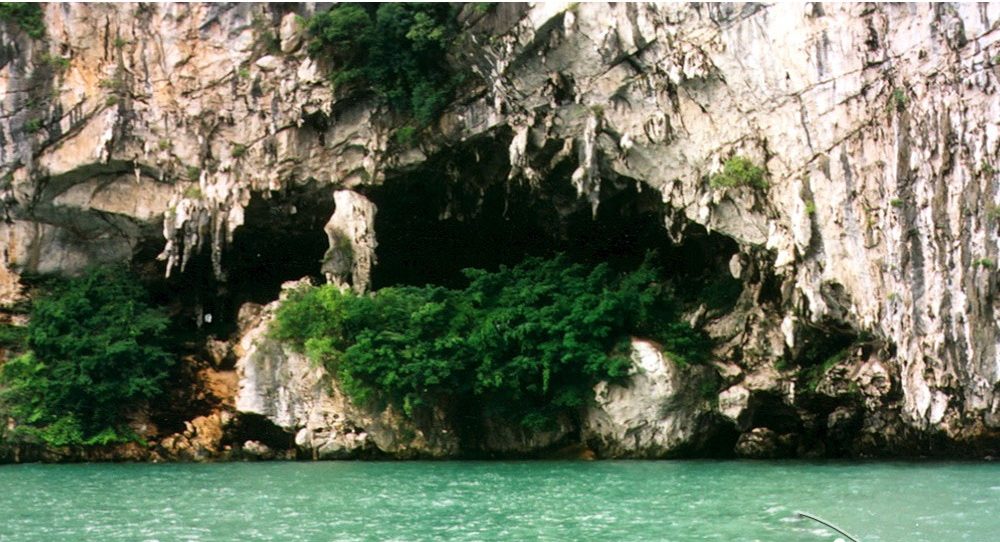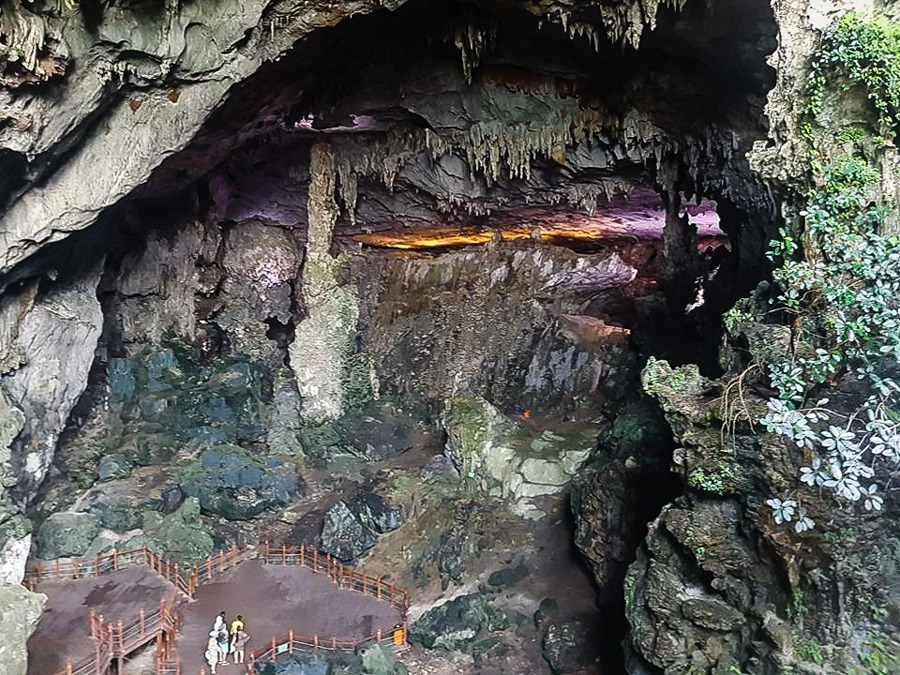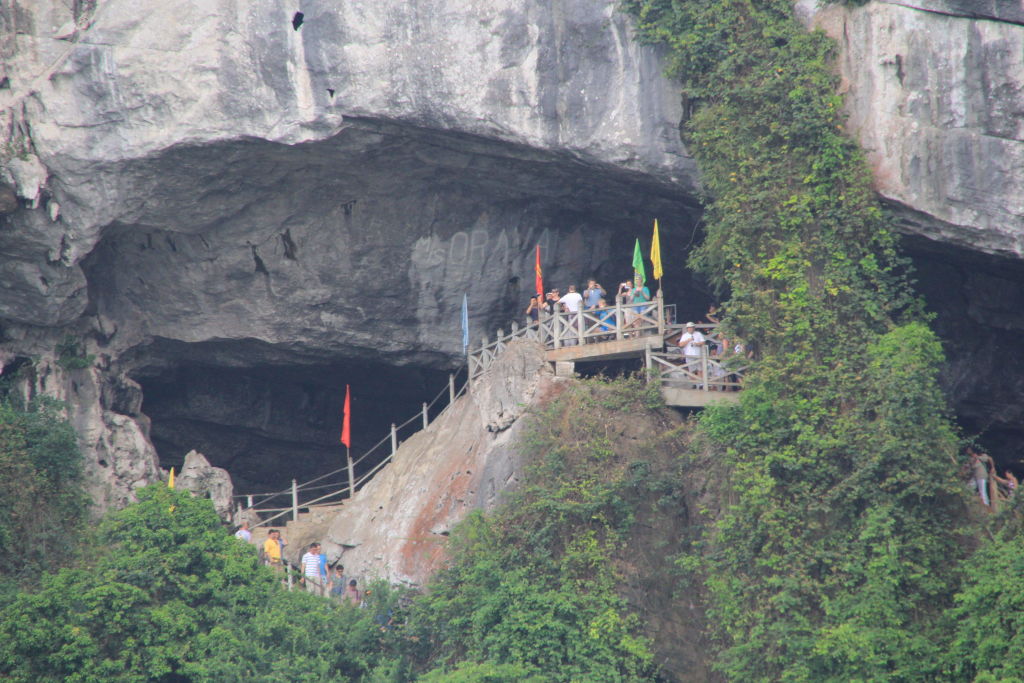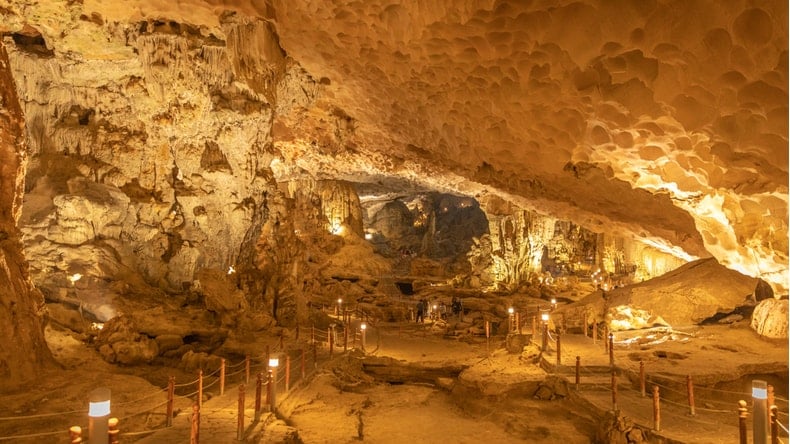Ha Long Bay (Ha Long Bay), an excellent travel destination, is located in the Vietnamese province of Quang Ninh. The bay is actually the center of a much larger zone including Bái Tử Long bay along with the Cát Bà islands. This large zone consists of similar geological and geographical features. The Ha Long bay possesses thousands of limestone karsts and isles in various shapes and sizes.

Local legend has it that the characteristic islets were formed by dragons. Hence, the name Hạ Long, which means”descending dragon”. The Bay was declared as one of the UNESCO World Heritage Site in 1994. It is also considered as one of the seven natural wonders of the world.

Ha Long Bay has a total area of around 1,553 square kilometers including 1,960 – 2,000 islets. The amazing thing about the limestone present in this bay is that it has gone through over 500 million years of formation, all in different conditions and environments hence is available in all kinds of sizes and shapes. The region also enjoys great biodiversity and is home to 14 endemic floral species and 60 endemic faunal species.
about the limestone present in this bay is that it has gone through over 500 million years of formation, all in different conditions and environments hence is available in all kinds of sizes and shapes. The region also enjoys great biodiversity and is home to 14 endemic floral species and 60 endemic faunal species.
Several research studies reveal that the bay was a place for human beings tens of thousands of years ago. Now, the area is considered a great tourist attraction, enticing visitors from all over the world. The Ha Long Bay is definitely a place worth going to.
Also Check: Marble Caves of Chile Chico, Chile
The bay consists of a dense cluster of some 1,600 limestone monolithic islands spectacularly rising from the ocean, each topped with thick jungle vegetation. Several of the islands are hollow, with enormous caves which people should explore while visiting Ha Long Bay.
Trinh Nu Cave (Virgin Cave)

The Trinh Nu Cave or Virgin Grotto is found east of Bô Hon 15 km south of Bai Cháy Beach, the center beach of Halong city. To young couples, it is considered the symbol of true love, a romantic place for taking the oath of love. Entering Trinh Nu Grotto, you will find in the middle of the grotto a stone shaping a lying girl with her long hair hanging down, looking to the sea with eyes full of vain hope. Situated opposite to Trinh Nu Grotto, Trong (or Male) Grotto has a stone statue of a boy who turns his face to Trinh Nu Grotto. One still hears his vain scream in tune with the wind blowing into the cliff somewhere.



The legend tells of a poor fisherman’s beautiful daughter, whose family was in the service of the rich landlord of the fishing zone. He forced the father to give him the girl as a concubine. However, she refused. She was already in love with a fisherman who must sail to the high seas to catch fish to prepare for their wedding. The landlord captured her, but with her resistance, the landlord exiled the girl to a remote island until hunger and exhaustion. One night, amidst terrible rain and winds, she turned into a statue called Hang Trinh Nu (Virgin Cave). The image of the girl painfully waited in vain for her fiancé to turn. When he returned and found out about the girl, he turned into an islet situated nearby called Hang Trong (Male Cave).
Luon Cave (Tunnel Cave)

Luon Cave is located in Bo Hon Island about 14 kilometers to the south of Bai Chay. It is the biggest cave in Halong, nearly 60 meters long, 4 meters wide and from 2.5 meters to 4 meters high depending on tidal water. Therefore, to explore this cave, tourists have to transfer to kayaks or small boats, each carrying 10 to 15 people. During high tides, tourists have to bend down to pass through the Hang Luon area.


The reason why the cave called Luon Cave is relatively iconic. It looks exactly like a bow gate opening at the bottom of the island with a blue lake in the middle. It flows into the sea by a tunnel created by an extremely mysterious cave. This is why its name is “Luon” – a verb that describes going through under something.

The spectacular landscape of Luon cave is a combination of mountains, lakes, clouds and grass. Passing through the pretty entrance, you will see a 1-kilometer square lake surrounded by luxuriant trees and high dangerous limestone walls, great scenery with cycads, ferns and benjamin’s fig trees. In the lake, there is a vibrant life of many species like shrimp, fish, crab and cuttlefish, etc. On the cliffs, there are many ferns and sweet-scented flowering orchids where golden monkeys can be seen swinging up and down the sides of the cliff. In addition, researchers have found some remains of freshwater snail shells, suggesting that humans had once inhabited this area. Inside Luon cave is a rich flora where visitors can enjoy the vegetation and intact natural scenery preserved.
Dau Go Cave (Cave of Wonders)

The Đầu Gỗ Cave is situated on Dau Go island, about 300 m from Thien Cung Grotto. It is known as “Grotte des Merveilles” (Cave of Wonders). The entrance to Dau Go Cave is a hole in the middle of a cliff. According to legend, the Dau Go cave is the place where Tran Hung Dao hid the limestone piles to prepare for the battle against the Mongols at Bach Dang River in 1288. In 2010, competent authorities restored the steles at Dau Go Cave, returning the natural beauty for this relic.




The inside of the cave is divided into three main compartments. The outer compartment is domed with plenty of natural light. Its ceiling has a system of stalactites featuring lively scenes of wild elephants, pythons, turtles, fighting cocks, deer and lions sitting in dynamic postures. Below the ceiling is a whole forest of multi-colored and multi-shaped stalagmites. A huge stone pillar with a perimeter of over ten meters stands in the middle of the cave. You will see images of clouds, phoenixes, dragons, dancers, flowers and vines. Crossing a narrow slope, visitors will arrive at the second compartment which has a spectacular image of rocky islands. Clusters of rocks and flowers seem to appear or vanish in a flash in the cave’s dim light. In the next area, many stone pillars were made by the nature. In the end of the Cave, there’s a freshwater lake.

Due to the wide porch cave, the humidity in the cave is relatively high as compared to other Halong Bay caves. Under such favorable conditions, many kinds of plants such as ferns, mosses and timbers develop. The temperature in the cave stays warm in winter and cool, pleasant in summer.
Thien Cung Cave (Paradise Cave)

Situated to the southwest side of the bay is the most magical Thien Cung Cave. It has an elevation of 25 meters above sea level. It was discovered in 1993 by a fisherman who, caught in a storm, was looking for shelter.



The way leading to Paradise cave is a perilous winding pathway, surrounded by thick forest. Passing a narrow gate, tourists see a 130-meter-long girth of grotto opening up. The vivid and spectacular beauty of stalactites is quite astonishing. The eastern wall of the grotto has a grandiose picture with characters of heroic tales. The four pillars and stalactites having contours of birds, fishes, flowers, dragon and phoenix makes it feel like a royal palace. For that reason, they name the cave “Thien Cung Cave”.

Inside the cave, the wind blows through holes among stones. It produces sounds like a beating drum in a festival of a classic village. At the last section of the cave, the white, blue and red lights produce a magnificent shot.
This cave also has 3 clean water ponds.

Sung Sot Cave (Amazing Cave)

Sung Sot Cave, discovered by the French in 1901, is located on Bon Hon Island which is considered to be the center of Halong Bay. Due to its surprising beauty, the early visitors named it “Grotte des Surprises” translated as Surprising Cave or Amazing Cave. It is one of the widest caves with an area of around 10,000 square meters and a length of more than 200 meters.

From the outside, it appears to be a small area. The ways is quite steep and covered by trees and foliage. However, after passing through a rocky slot, it has a huge space within with many surprising scenes to be explored.






It has three compartments. The first compartment has a smooth reddish ceiling with glittering stalactite of special shapes hanging from the high ceiling. In the second compartment, the tourists get the chance to cherish an old banyan tree with luxuriant foliage and ‘recognizable’ formations of mammoths, elephants, seals, dinosaurs, sea bears, unique lions, flowers, and even a general gathering his troops. Reaching the highest peak of the cave comes the third compartment which resembles a medieval opera house. It is expanded with a smooth and hollow carved dome. Visitors eventually see sparkling landscapes of royal gardens and clear water lakes, with some types of trees and birds living here. The cave is often visited by monkeys searching for fruits.

The two sides of the aisles are pillars with lights on the top, which are the poles of the directions as well as decorations and lighting. Spotlights of varied colors are placed unobtrusive and they add to the enchantment of the grotto.



